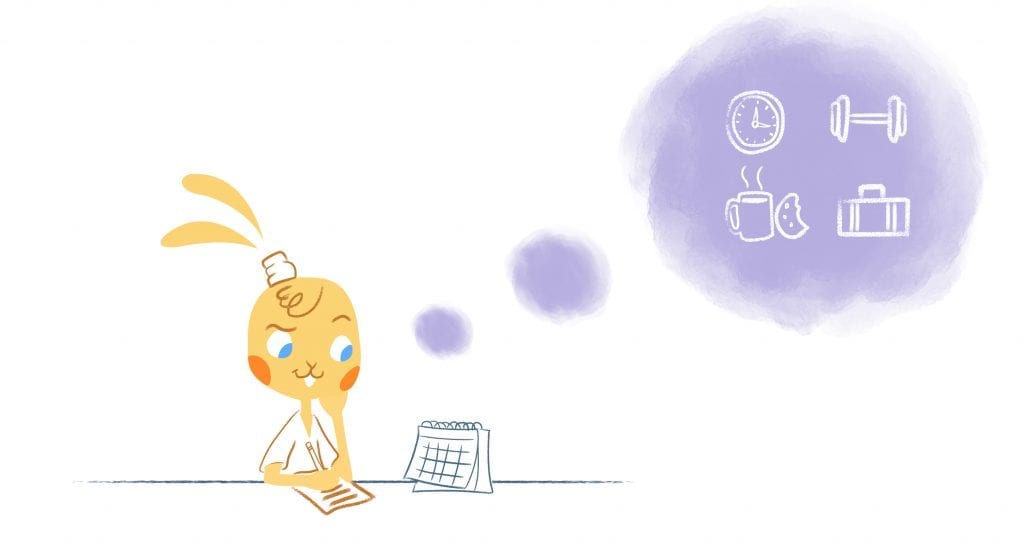

Are you feeling overwhelmed and burned out? You’re not alone. In May, SHRM’s Employee Mental Health in 2024 Research Series reported that 44 percent of 1,405 U.S. employees surveyed felt burnt out at work, 45 percent felt emotionally drained from their work, and 51 percent felt used up at the end of their workday.
What’s behind this phenomenon? Well, there isn’t just one specific culprit. However, with our 24/7 availability, it’s easy to fall into the trap of being overwhelmed, having disorganized priorities, and experiencing burnout.
So, if you feel like your productivity has stalled, you might need a productivity reset. By refocusing on what really matters, you will be able to pause, reflect, reorganize, and refocus. As such, with this guide, you will learn how to handle distractions, procrastination, and just feeling stuck.
What is a Productivity Reset?
Reviewing and restructuring your workflow, habits, and goals can create a more focused and efficient routine. Think of it as a mental and organizational reboot. The goal is to eliminate unproductive habits and distractions and to a sustainable approach to tackling personal and professional responsibilities.
To reset your productivity, you need to do the right things and ensure they align with your long-term goals. This process allows you to reevaluate priorities and create a system that meets your current needs.
Recognize When You Need a Reset
Whenever you need a productivity reset, the first step is to recognize that you need one. Various factors can contribute to productivity ruts, such as:
- Constant procrastination. Putting off important tasks or tackling only the easiest items on your to-do list is a sign you’re out of sync with your priorities.
- Overwhelm. When you feel stressed and burned out, you may feel you have too much to do. This often results from inefficient time management or a misunderstanding of which tasks are most important.
- Lack of focus. Do you frequently jump from one task to another without making significant progress? This can occur when priorities are disorganized and the mindset is scattered.
- Decreased motivation. The next time you lose enthusiasm for your work or personal projects, take a moment to reflect on whether your current routines are aligned with your goals and values.
- Burnout. During times of overworking, you become physically and mentally exhausted, which is a sign that your energy and workload are not effectively managed.
By recognizing these signs, you can know when to hit the reset button. Once you have identified the need, it’s time to act.
Identify Your Productivity Killers
The next step is to take a moment to reflect on your daily routine and identify what is preventing you from being productive. The following are some of the most common culprits:
- Excessive meetings. How much time do you spend in meetings compared to actual work?
- Distractions. Are you constantly distracted by notifications, social media, or interruptions at work?
- Lack of organization. Do you have difficulty finding important documents, emails, or tasks because you are disorganized?
If you pinpoint your productivity killers, you can take targeted steps to solve them so that you become more focused, efficient, and less stressed. For example, if you have excessive meetings, you may want to consider negotiating shorter meetings or using alternatives like Slack chats.
Declutter Your Mind and Space
An environment that promotes productivity begins with a clear mind and a clutter-free workspace. Mental and physical distractions must be cleared out in this step.
Declutter your mind.
It can be just as debilitating to have a cluttered mind as it is to have a cluttered workspace. Here are some tips for decluttering your mind:
- Brain dump. Make a list of all the tasks, ideas, worries, and thoughts that are occupying your mind. Don’t worry about arranging them yet, just get them all out of your head and onto paper.
- Prioritize. After you’ve done your brain dump, review the list and prioritize what’s most important. Remove the low-priority tasks that may be cluttering your mental bandwidth, and identify the ones that align with your goals.
- Set boundaries. Establish clear boundaries between work time, personal time, and rest time. As a result, you can keep your mind focused when it needs to be and relaxed when it needs to be relaxed.
Declutter your physical space.
To maintain focus and productivity, you need an organized environment. The following steps will help you declutter your workspace:
- Clean your desk. Remove unnecessary papers, items, and clutter from your workspace. Only keep what is necessary for the task at hand.
- Organize digital clutter. Clear out old files, emails, and notifications. By organizing your desktop, emails, and folders, you can easily find what you need when you need it.
- Create a dedicated workspace. Whenever you work at home, designate a specific area for your work. This will help you create a mental separation between work and relaxation, which will make it easier for you to concentrate.
Reassess Your Goals
We can shift our priorities over time, resulting in what was once a key goal no longer holding the same significance. During a productivity reset, you will reevaluate your short-term and long-term goals to ensure they are aligned with your current goals.
- Evaluate current goals. Take the time to review your existing goals. How relevant are they today? Are they in line with your current values and vision for the future? Letting go of a goal that no longer serves you is okay.
- Set new SMART goals. If your current goals seem outdated or irrelevant, consider setting SMART (Specific, Measurable, Achievable, Relevant, Time-Bound) goals. By setting SMART goals, you can become more focused and motivated.
- Break down big goals. Long-term goals can feel overwhelming. You can tackle them one step at a time by breaking them down into smaller, manageable tasks. As a result, progress is more achievable, and procrastination is less likely to occur.
Rebuild Your Daily Routine
Your daily routine is the foundation of your productivity. It’s important to create routines that support your goals to maximize efficiency and maintain focus.
- Prioritize your tasks. Not all tasks are created equal. The Eisenhower Matrix, for example, can be used to prioritize tasks based on urgency and importance. As a result, high-priority tasks are prioritized first.
- Time blocking. Specifically, dedicate specific amounts of time to specific tasks or categories of tasks throughout your day. Allocating specific times for work, breaks, and personal activities can help you stay focused and avoid multitasking.
- Batch similar tasks. By grouping similar tasks together, you can work more efficiently. By batching emails, meetings, and creative tasks, you won’t have to switch between different types of work all the time.
- Implement the two-minute rule. When a task takes less than two minutes to complete, complete it right away. This prevents small tasks from piling up and overwhelming your schedule.
- Build-in breaks. Regular breaks are essential for preventing burnout and maintaining focus. The Pomodoro Technique, which involves working for 25 minutes and then taking a 5-minute break, makes maintaining focus and energy throughout the day easy.
- Establish morning and evening routines. In the morning, a consistent routine helps you get a start on the day, while in the evening, you can wind down and prepare for the next day. Activities such as journaling, meditation, exercise, or planning your day can be incorporated into these routines.
Use Productivity Tools and Systems
With productivity tools, you can stay organized and structured. Whether you use a simple to-do list or a comprehensive project management system, the right tools will keep you on schedule.
- Task management apps. With apps like Todoist, Asana, or Trello, you can create, organize, and prioritize tasks. For larger projects, they’re accommodating for dividing them into smaller, actionable steps.
- Calendar blocking. A digital calendar like Google Calendar allows you to block off time for specific tasks and commitments, ensuring that important activities receive the attention they deserve.
- Habit tracking. Apps like Habitica and Streaks allow you to track and reinforce positive habits, making it easier to stick to your routines.
- Time tracking. Time tracking tools like Toggl or Clockify can help you understand how you spend your time. This is particularly useful for improving time management and identifying time-wasters.
Practice Self-Care
The key to sustained productivity is taking care of yourself, such as;
- Get enough sleep. Always aim for 7-9 hours of quality sleep every night.
- Eat healthy. Consume nutritious foods to keep your body healthy.
- Exercise regularly. It is possible to boost energy and reduce stress through physical activity.
- Manage stress. Take advantage of stress-reduction techniques such as meditation and deep breathing.
Commit to Regular Check-Ins
An ongoing productivity reset isn’t a one-time fix. If you want to keep the momentum going schedule regular check-ins to review your progress.
- Weekly reviews. Every week, take time to examine what you accomplished, what challenges you faced, and what you can improve.
- Monthly goal reviews. Each month, review your goals and see if you’re still on track. Keep your goals aligned with your priorities by making adjustments as needed.
- Self-reflection. Examine your energy levels, motivation, and satisfaction with your progress. In order to stay aligned with your professional goals and personal well-being, you should reflect regularly.
Conclusion
When life feels chaotic and efficiency is slipping, a productivity reset can help you regain control. When you declutter your mind and space, rethink your goals, rebuild your routine, and leverage the right tools, you can create a sustainable system that promotes focus, motivation, and accomplishment.
However, don’t forget that productivity isn’t about doing more. Rather, it’s about doing what matters most. By regularly resetting your approach, you will remain aligned with your goals, ensuring long-term success.
Image: Castorly; Pexels











Deanna Ritchie
Editor-in-Chief at Calendar. Former Editor-in-Chief, ReadWrite, Editor-in-Chief and writer at Startup Grind. Freelance editor at Entrepreneur.com. Deanna loves to help build startups, and guide them to discover the business value of their online content and social media marketing.